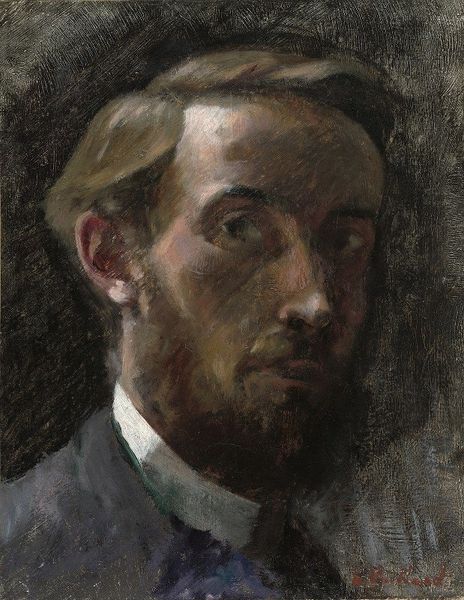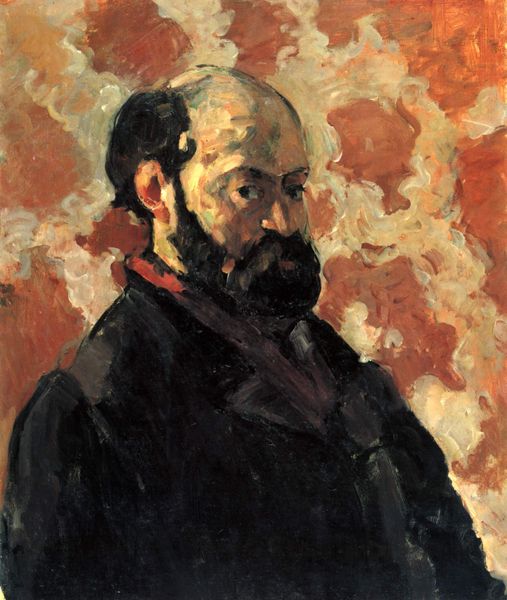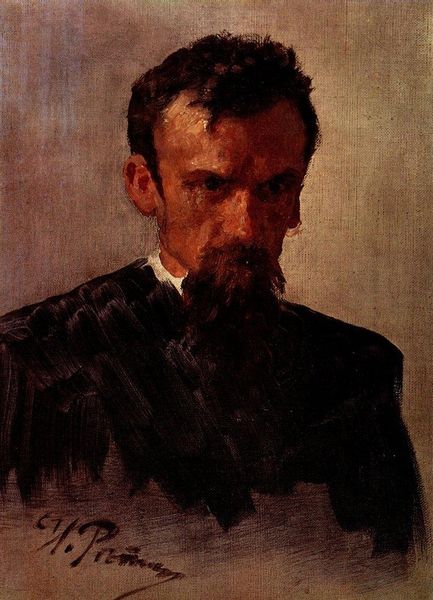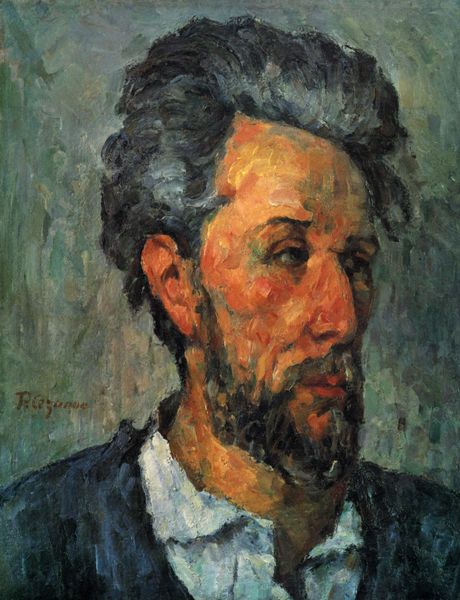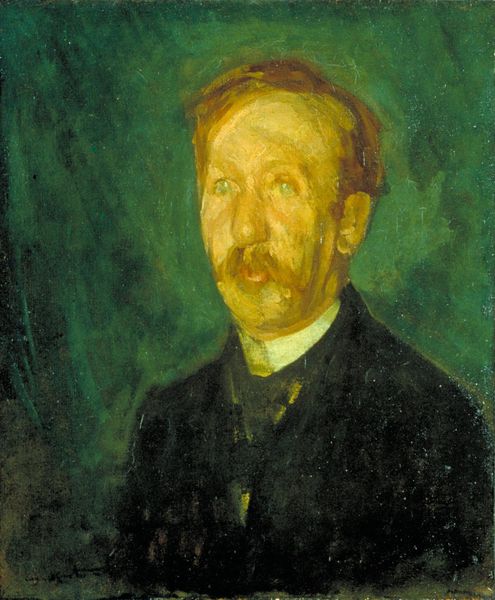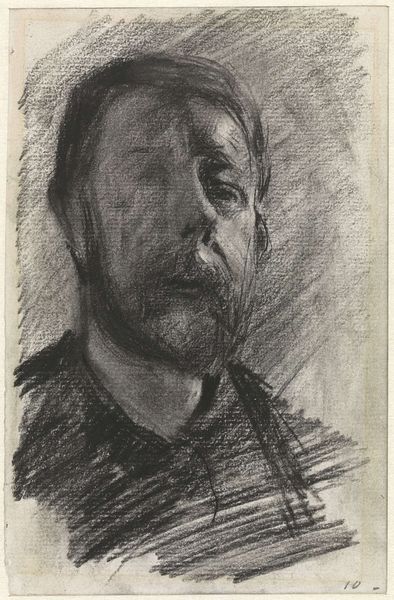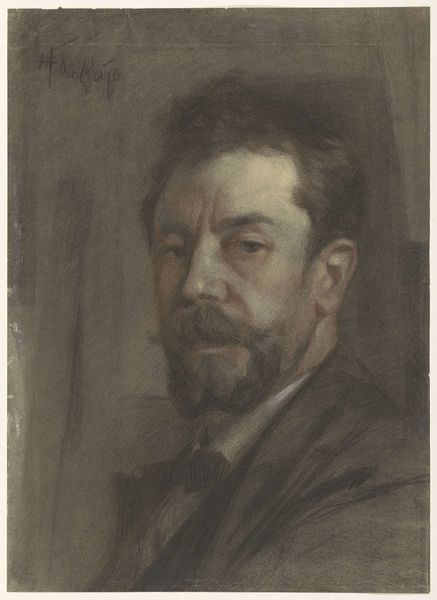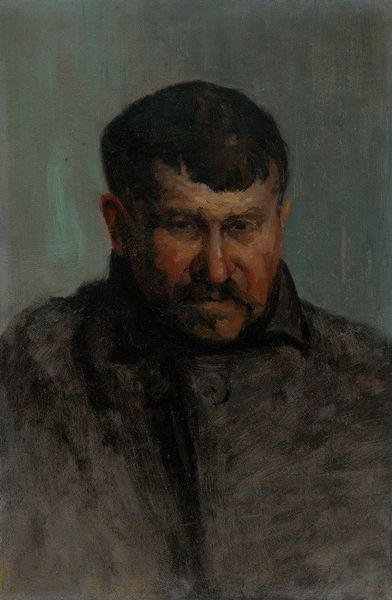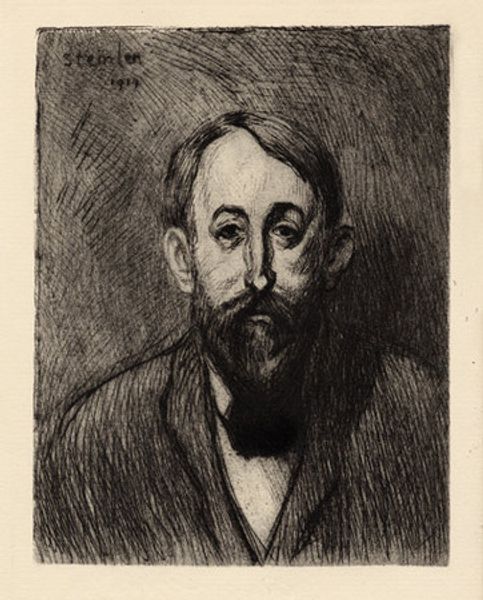
Copyright: Public domain
Curator: Standing before us is Jacques-Émile Blanche's striking oil on canvas portrait of Francis Poictevin, completed in 1887. It now resides here at the Tate Britain. Editor: My immediate impression is one of subdued intensity. The color palette is very restrained, dominated by the black of the coat against that pale yellow-green background, focusing all attention on the sitter's face. There is something about the sidelong glance and clasped hands that speaks volumes, but what story do they tell? Curator: The social milieu is critical here. Blanche painted many portraits of artists and writers of his time, mostly men. There is a narrative there about artistic communities and their gatekeepers. How Poictevin himself negotiated that world certainly influences how we see this image today, who had power then, and who didn't. Editor: Precisely. Given that the artist, Blanche, was also part of upper-class society and well-connected in those circles, while the subject of the painting, Poictevin, has largely been forgotten by the grand narrative of art history, this portrait also raises questions about whose stories get told, and why. What socio-economic status did Poictevin hold? Curator: His place was within Blanche's intimate social circle. We can ask questions such as, Did he identify as homosexual? A portrait, especially in the late 19th century, could signify belonging and status, but can also allude to subversive gender performances, so what statements can we now read in his posture, the neat but edgy grooming and mustache? Editor: And, I wonder, if we knew more about the relationship between the two men, if there was perhaps an emotional power dynamic reflected here in the controlled, almost claustrophobic composition? It is difficult to disregard issues such as gender, sexuality, and power when engaging with portraiture like this. What part did portraiture fulfill in the lives of bourgeois artists? Curator: Definitely, portraiture was also tied up with reinforcing power and legitimizing certain narratives and erasing other marginalized realities. Understanding the socio-political role this painting played when it was made lets us question its reception by present-day audiences. Editor: By re-examining this image in a more inclusive way, maybe we can offer a new interpretation. The interplay between these elements makes the portrait of Poictevin so profoundly complex and thought-provoking, after all. Curator: Right, these are valuable conversations. A chance to consider how historical works resonate with contemporary societal structures.
Comments
No comments
Be the first to comment and join the conversation on the ultimate creative platform.

